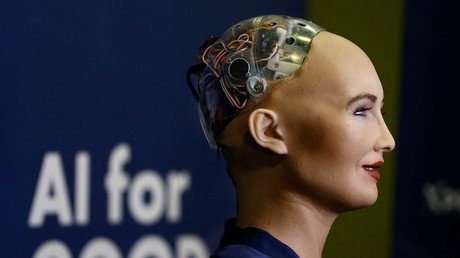MIT lab’s visionary ‘food computer’ project may be ‘selling fantasy’ to millennials and donors
An agriculture project at MIT Media Lab offers a grand vision of tailored homegrown food, but its present reality is poorly-working technology and a flashy show meant to secure funding from gullible sponsors, insiders say.
Imagine a world where every family can grow fresh vegetables in a sealed high-tech box that controls every aspect of the process according to a ‘climate recipe’ downloaded from some private enthusiast on another continent. And the result is far superior to that tasteless food you buy in a supermarket today.
That is the vision of Caleb Harper, head of the Open Agricultural Initiative at the Media Lab ran by the Massachusetts Institute of Technology, as described by himself in numerous public speeches and media appearances. The box, or “food computer” as he prefers to call it, will be made from parts readily available on Amazon, the technology open source and easily hackable, and the exterior fully customizable to express the owner’s individuality.
This rosy promise seems like a millennial’s dream and so far Harper’s project has received positive coverage and steady funding. It may also be pure fantasy meant to cover up an ugly reality. It seems “food computers” are just ordinary hydroponic plant boxes with sensors that often don’t work. Plants shown in photos, and to potential donors given a tour of the lab, were bought elsewhere and placed in the boxes so as to appear as if they grew there, and some of the statements made by Harper were exaggerated or simply not true. At least that’s what some people familiar with his work told the media.
The underbelly of the Open Agricultural Initiative has been described by several exposés this month. Business Insider called it “mostly smoke and mirrors”. The Chronicle of Higher Education said Harper is “selling a fantasy” rather than conducting genuine scientific inquiry. The New York Times says even a paper his team published in the peer-reviewed online journal PLoS One in April is based on data that some members of the project believed didn’t meet the standards of an academic work.
The exposés are based on reports of insiders familiar with the Open Agricultural Initiative as well as internal communications provided to the journalists. MIT Media Lab’s leadership was aware of the concerns, according to the Times. One of the researchers working for Harper told the lab director that his boss had been making false statements in interviews about his team’s progress. It’s not clear whether the director, Joichi Ito, did anything about the tip-off. He in turn resigned earlier this month after a scandal over an alleged cover-up of the lab’s financial dealings with disgraced financier Jeffrey Epstein.
Also on rt.com Founder of ‘revolutionary’ blood-testing startup Theranos charged with fraudIf the allegations are confirmed, Harper’s name will join a list of manipulators who used techno-babble and media hype to enrich themselves. The best-known example of that was Elizabeth Holmes, the CEO of the now-defunct company Theranos. She said she could revolutionize blood testing and for a time was a poster child for Silicon Valley’s promise of salvation through innovation. Now she is awaiting trial for defrauding investors, doctors, and patients.
Like this story? Share it with a friend!















